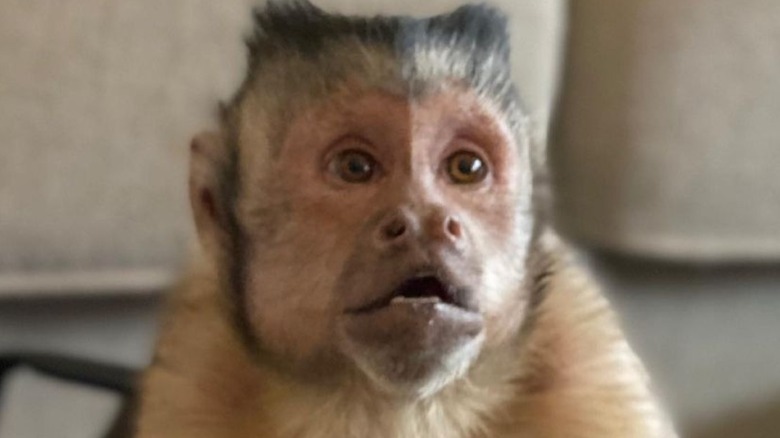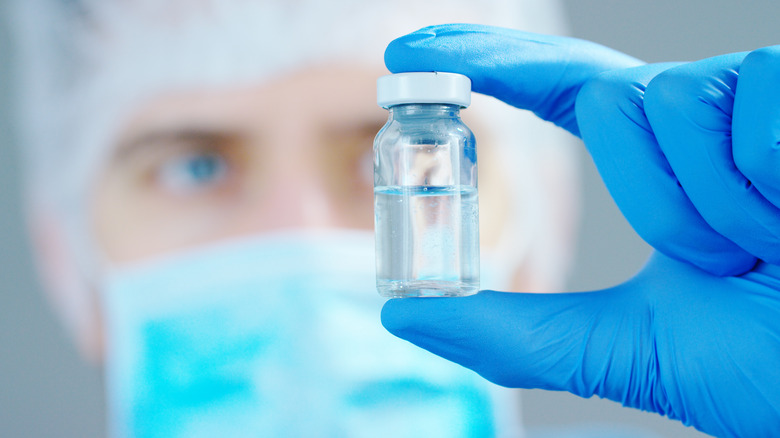TikTok Star George The Monkey's Cause Of Death Explained
Known for monkeying around on TikTok for his huge fanbase, George the monkey died on June 7 due to complications from a routine dental appointment. George's owners shared on TikTok that George had gone to the vet for a dental check-up. There were complications with anesthesia during the exam that "led to a long fight for his life." It's not clear what exactly the complications were, nor have the exact details of the dental procedure been released.
The 12-year-old tufted capuchin lovingly nicknamed Georgie Boy was beloved on social media, gaining 17.7 million followers on TikTok and over a half-million on Instagram, as of this writing. Upon hearing of George's passing, distraught fans offered support and condolences to George's parents.
George's death brings to light the risks of anesthesia for our furry friends. Veterinarian Truchetti Geoffrey explained in an article for DispoMed that "totally safe" anesthesia for small animals does not exist, but understanding the possible risk factors that make anesthesia life-threatening can help.
The purpose of anesthesia for pets
Animals of all kinds are anesthetized for a number of reasons, like surgical or non-surgical procedures that are painful or require "immobilization" (like teeth cleanings), according to the University of Texas at Austin Animal Resources Center. When an animal is put under anesthesia, they don't feel part or all of their body, and may or may not be conscious.
According to the Seattle Veterinary Specialists, common complications include arrhythmias (abnormal heart rate), hypothermia, hypotension, hypoventilation, and difficult recovery. However, guidelines are in place to reduce the risk of these complications becoming fatal, including heat and fluid support via a catheter, as well as closely monitoring the patient's vitals.
While it can be alarming for any human or animal to be put under anesthesia, having a controlled level of unconsciousness can help the procedure go smoothly — especially when precision is required and any movement could lead to further complications. It also ensures the animal doesn't feel pain during the procedure (via American Veterinary Medical Association). And despite the risks that are associated with anesthetized procedures, like routine dental cleanings, the American Animal Hospital Association asserts that "all pets should receive the important dental care they need to live the healthy, pain-free life they deserve." Consult with your vet if you have any questions or concerns about anesthesia.


